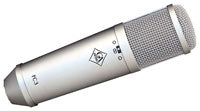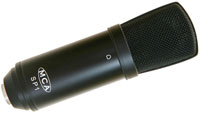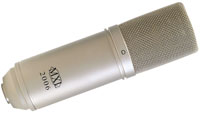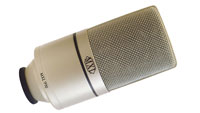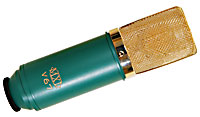Mic Mods
Welcome to our directory of microphone modifications! Below you'll find specific mod options for over 40 popular (and inexpensive) microphones.
Scroll down, or click to jump ahead:
AKG | Apex | Audio-Technica | Avantone | BadAax | BLUE | CAD | Carvin | Fame | Focusrite | Gauge | Golden Age | Groove Tubes | M-Audio | MCA | Monoprice | MXL | Nady | Neumann | RODE | t.bone | Sterling Audio | Studio Projects
AKG Mic Mods
Apex Mic Mods
Audio-Technica Mic Mods
Avantone Mic Mods
BadAax Mic Mods
"BM" Mic Mods
BLUE Mic Mods
CAD Mic Mods
Carvin Mic Mods
Fame Mic Mods
Focusrite Mic Mods
Gauge Mic Mods
Golden Age Mic Mods
Groove Tubes Mic Mods
M Audio Mic Mods
MCA Mic Mods
Monoprice Mic Mods
MXL Mic Mods
Nady Mic Mods
Neumann Mic Mods
Rode Mic Mods
t.bone Mic Mods
Sterling Audio Mic Mods
Studio Projects Mic Mods
About Mic Mods
What separates a $100 microphone from a $1000 microphone? The brand name is a piece of it, certainly. But the quality of components, and the quality of the design, are significant factors.
In the early days of microphone modding, it was possible to "swap capacitors" or upgrade a few critical components and end up with a nicer microphone. We personally think the sonic gains from such modest modifications were probably overblown (look up "confirmation bias" to understand why), but in any case those days are largely over now that the major Chinese suppliers have migrated their production lines to surface-mount assemblies.
While it is possible to upgrade components on a surface-mount circuit board, it is very difficult, and beyond the reach of the average DIY aficionado.
Yet there are still meaningful ways to upgrade an inexpensive microphone, resulting in audibly superior performance. Our microphone mods can increase a mic's output level by 10dB or more, while lowering the noise floor by the same amount. A mic's frequency response can be altered subtly or aggressively, in service of a specific sonic goal. These improvements are immediately audible, as well as measurable. We're sure there are true "golden ear" engineers who can hear that the $80 beeswax capacitor has more "depth" than the $40 polystyrene film-and-foil capacitor.... but our circuit mods don't require golden ears, or faith. We have lab tests to show the improvement that we make.
Capsule Replacement
Replacing a mic's capsule is the easiest mod, in most cases, and often the most effective -- especially for transformerless microphones. The reason is that the vast majority of transformerless condensers have a bright and peaky K67-type capsule, or a low-quality small-diaphragm capsule. None of those options is likely to make your productions sound great. But the fault is mostly with the capsule, because that transformerless circuit is probably pretty decent. It is a solid design (pioneered by Schoeps) and although modern implementations are compromised in multiple respects, the circuit is surprisingly resilient. It performs pretty well even when built carelessly. Even those compromised implementations are still not the biggest problem that the mic has.
Circuit Modification
In some cases, it is possible to make meaningful mods to the existing circuit. We suggest this only when the circuit has "through hole," also known as leaded components. We have kits for CAD microphones and the Studio Projects C1/C3 microphones that augment and upgrade the stock circuits.
But even then, we don't offer simple "capacitor swap" mods. Our circuit mods tend to be comprehensive. Once you're going to the trouble to upgrade a microphone, we want to upgrade all the parts that matter!
Circuit Replacement
Even when most cheap microphones had leaded components on the circuit board, we found that our upgrade parts selection process suffered from a lack of physical space on the stock circuit board. If the Chinese factory used a cheap, undersized output capacitor, chances are we didn't have room to install a proper film cap in that space.
Also, removing parts from a cheap imported PCB is risky. It is too easy to lift a solder pad or break a trace, especially for novices.
For these reasons, most of our circuit mods include our own custom circuit boards, plus 100% of the parts needed to populate those boards. We buy large quantities of components -- resistors, capacitors, transistors, diodes, and more -- and sort them all. We select the best, match parts where it matters, and bundle a comprehensive suite of components with the new circuit board.
The circuit designs are not merely recreations of the original Chinese circuit. Instead, we painstakingly optimize each circuit, testing multiple component brands and values, until we meet our stated performance goals for each circuit.
The specs on our transformerless circuit kits (which fit dozens of "donor" microphone bodies from MXL, CAD, Apex, Nady, t.bone, etc.) rival commercial microphones costing over $1000. These products really do represent premium studio microphones in DIY kit form.

























